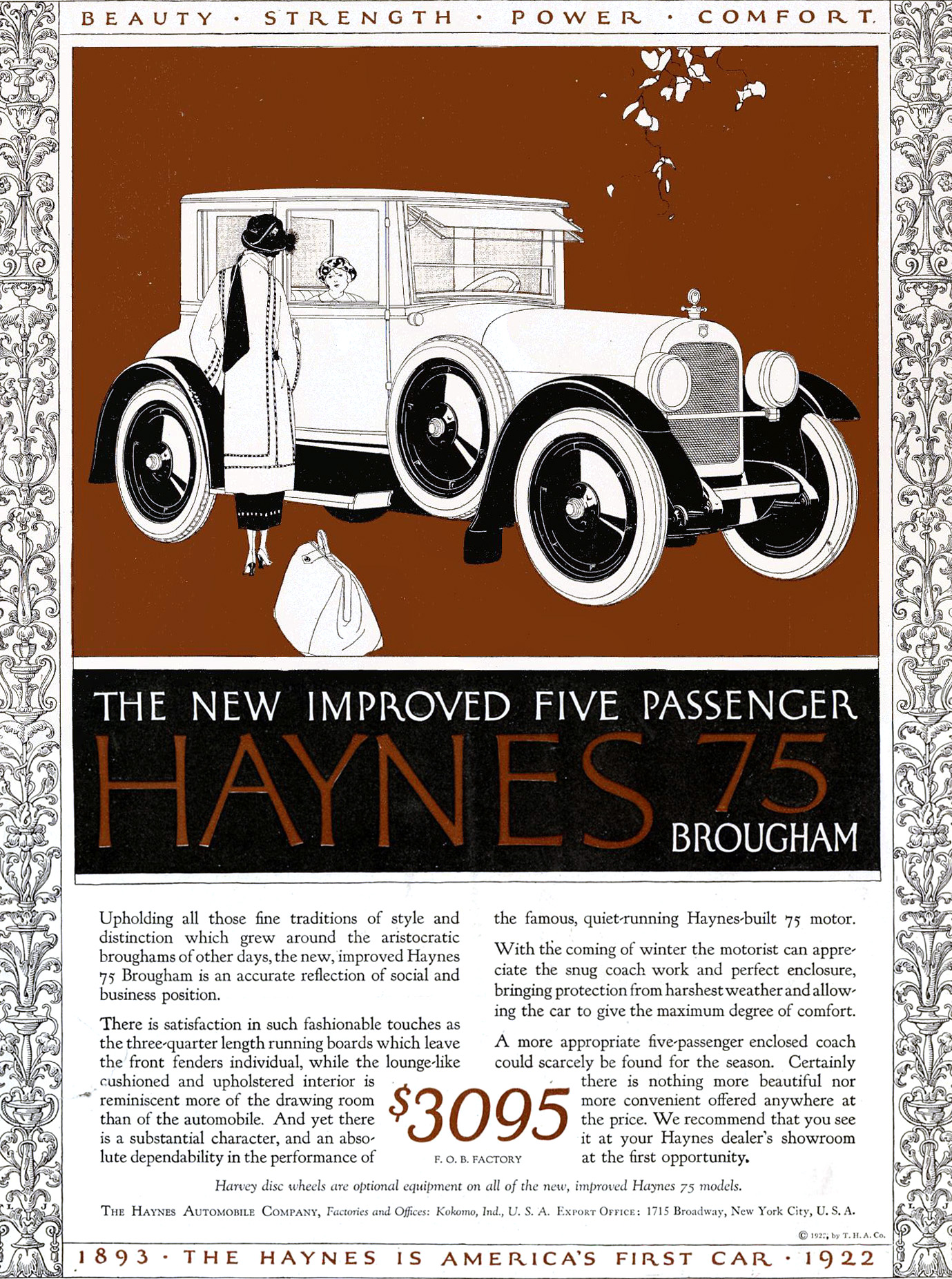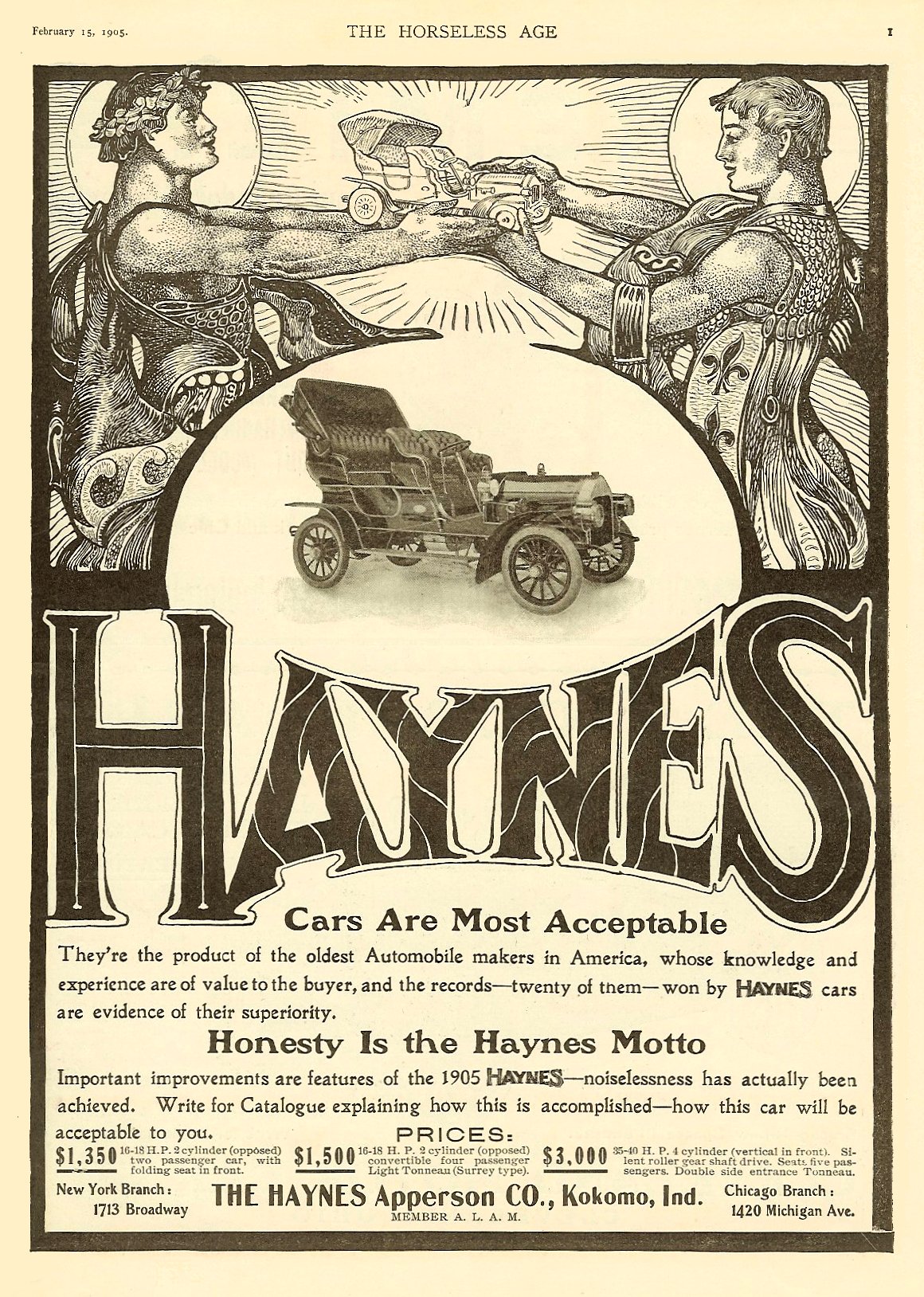It was the first automibile manufacturer in Indiana, and among the first in the United States. Elwood Haynes, one of the founders, was the inventor of stainless steel and stellite, and many of the early advances in automobile technology was first invented by the company.
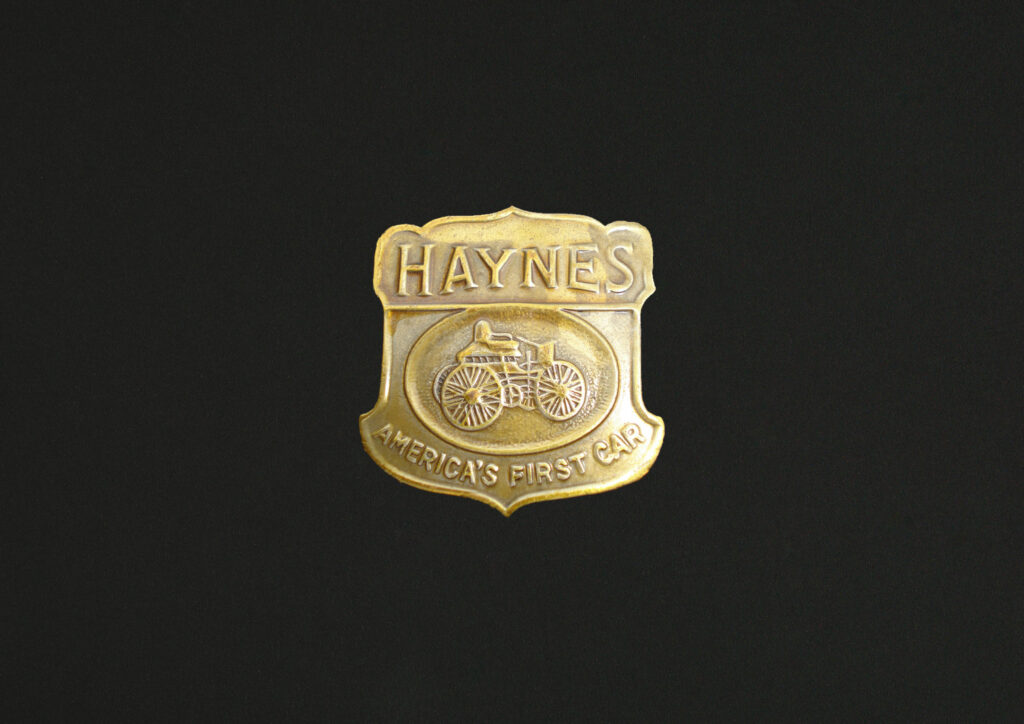
History.
The company was founded by Elwood Haynes and brothers Elmer and Edgar Apperson. In 1894, the trio built one of the first gasoline powered vehicles in the United States, at Aperson’s Riverside Machine Works.
By 1898 the company was producing one new car every two to three weeks, and selling early models for $2,000 (USD). At the end of that year, they relocated the company to a large factory where they designed two additional models. They brought on a larger workforce and increased the production rate to between two and three new cars each week. From there business began to boom, five cars a week in 1898, thirty 1899, 192 in 1900 and 240 in 1901. Production increases kept the factory open 24 hours a day, and two shifts of workers was needed to keep the factory running at capacity.
Haynes-Apperson automobiles were known for their “long distance running” capability. The company regularly competed their cars in endurance races. The last model designed by the company was had a three-speed motor and was capable of 24 mph on pnumatic tires. In 1902, the brothers had turned a large profit from the enterprise and they decided to split up to form their own companies. The Apperson automobile company was formed that year, and in 1905, Haynes-Apperson was renamed the Haynes Automobile Company.
The 1904 Haynes-Apperson Light Car was a runabout seating two passengers, selling for $1,550. The horizontal-mounted water-cooled flat twin, situated at the rear of the car, produced 11 hp (8.2 kW). A 3-speed transmission was fitted, and the car used an angle iron frame. The Tonneau had a similar flat-twin of 17 hp (12.7 kW), situated at the front of the car, and three-speed transmission was fitted. The angle iron-framed car weighed 2300 lb (1043 kg), seated five, and sold for $2,500.
An 1894 Haynes is in the permanent collection of the Smithsonian Institution’s National Museum of American History.
(A portion of this article is licensed under the GNU Free Documentation License. It includes content from this Wikipedia article.)
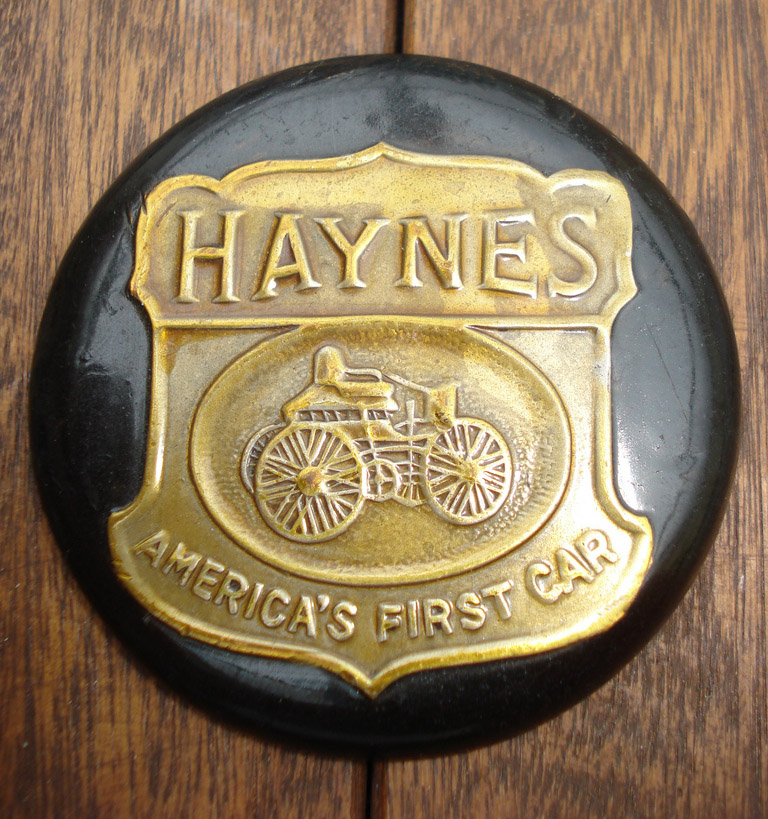
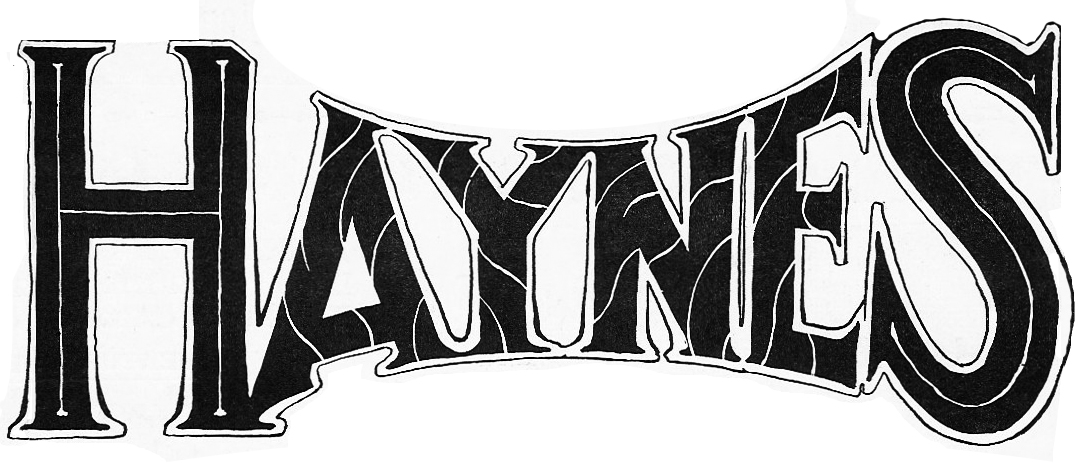
Haynes promoted themselves as “America’s First Car”, what follows is text from one of their 1913 ads…
Help sell themselves.
They are distinctive and desirable in every way. Their prestige as America’s first car is a strong selling help — their reputation, built uninterruptedly through twenty years of automobile history, makes them well known. In handling the Haynes, you have the assistance of an alert selling and advertising organization and thousands of dollars spent in publicity—you have in the car itself noteworthy beauty of design, power, durability, coupled with absolutely everything in the way of comforts and conveniences, even down to the little details that often make such a difference—and lastly you have The greatest feature of this season and of all seasons—The Vulcan Electric Gear Shift to help you sell the Haynes. This wonderful feature is sending prospective buyers of automobiles to our dealers by the thousands—and is sending them half sold. Think what a saving this is in time and the expense of salesman ship. How different from having to search out prospects for a car in which people are utterly uninterested, and getting their orders only after long drawn out and arduous efforts.
